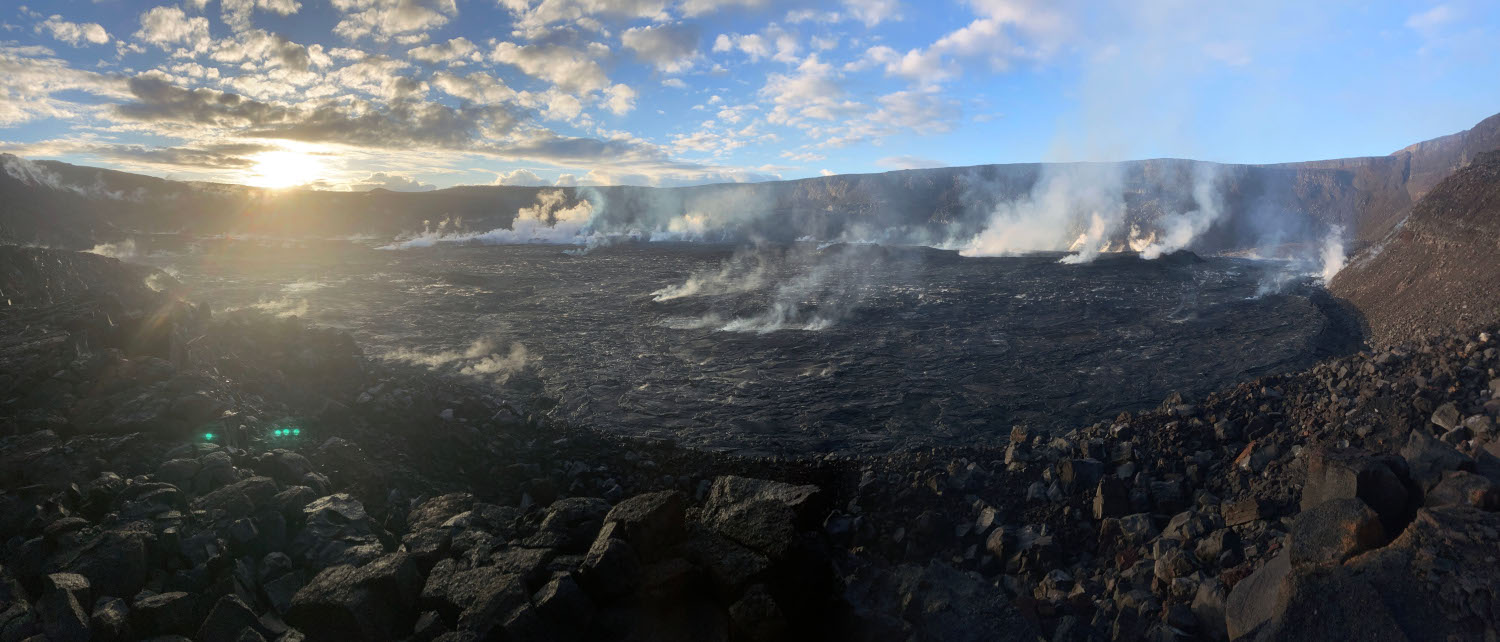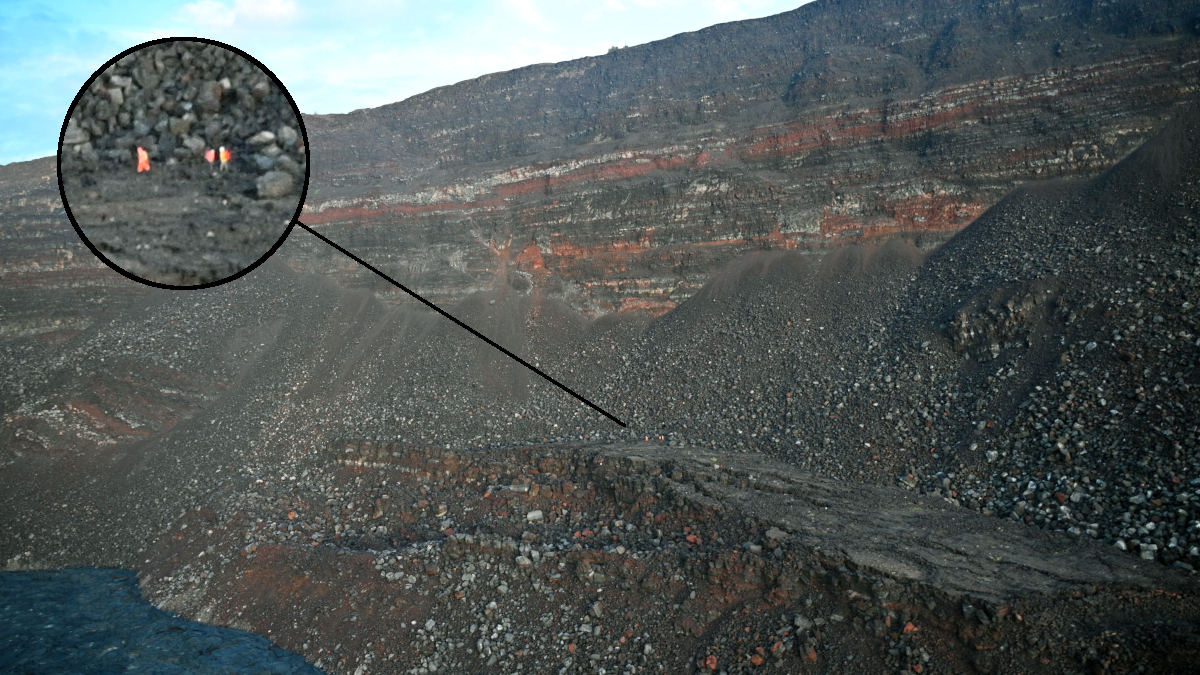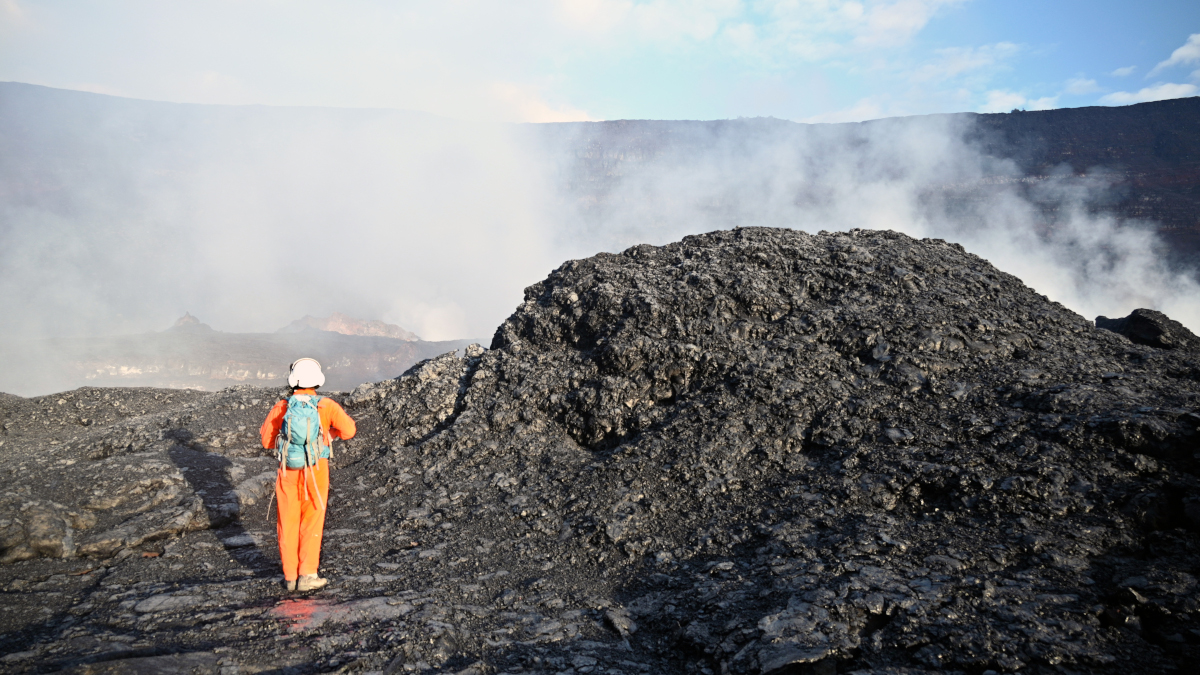This story appears in the above BIVN Hawaiʻi Update. The video will jump to the associated story when played. (A synthesized voice was utilized in the narration for this story)
(BIVN) – No active lava has been observed at Kīlauea since March 7, and the volcano is not erupting. The current Volcano Alert Level remains at ADVISORY.
The USGS Hawaiian Volcano Observatory provided this Monday update on the summit activity:
Uēkahuna tiltmeter was flat over the past 24 hours. Small flurries of earthquakes have occurred irregularly beneath Halemaʻumaʻu, Keanakākoʻi Crater, and along the southern end of Kaluapele (Kīlauea caldera) since the early morning hours of Sunday, April 16, 2023. Earthquake activity at the summit remains slightly elevated. The most recent SO2 emission rate of approximately 185 tonnes per day (t/d) was measured on April 22.
No unusual activity has been noted along the Rift Zones, scientists say, where steady rates of ground deformation and seismicity continue along both.

USGS: “Early in the morning on Friday, April 21, two crews of geologists from the Hawaiian Volcano Observatory flew via helicopter into Halema‘uma‘u crater at the summit of Kīlauea to collect geologic samples. One crew visited the crater floor to sample cooled lava from the 2020–2023 summit eruptions, and another crew scaled part of the crater’s northwest wall to sample ash beds and lava flows dating back many thousands of years in the volcano’s past. Both crews witnessed a spectacular sunrise from inside the crater, as captured in this panorama from the base of the northwest wall.” (USGS image by M. Zoeller)
On the morning of April 21, HVO geologists visited the floor of Halemaʻumaʻu to document and sample deposits erupted by the volcano. Photos were posted to the USGS website. The team said that studying the newly exposed lava flows and tephra layers on the walls of the caldera will help them better understand Kīlauea’s long term eruptive history, “which alternates between effusive periods (producing lava flows) and explosive periods (producing tephra such as ash).

USGS: “Three orange-clad geologists from the Hawaiian Volcano Observatory can be seen in this image (in orange, near center of image). During a visit to Halema‘uma‘u crater the morning of April 21, 2023, the geologists collected tephra samples from the Uēkahuna bluff along the northern wall of Kīlauea’s summit caldera. Kīlauea has a history of explosive eruptions—the evidence for these events is contained within the many layers exposed along this part of the volcano.” (USGS image by L. Gallant)(Inset image in upper left showing close-up of geologists added by BIVN)
The most recent sulfur dioxide (SO2) emission rate was measured at approximately 185 tonnes per day on April 22.


by Big Island Video News7:00 am
on at
STORY SUMMARY
HAWAIʻI VOLCANOES NATIONAL PARK - Kīlauea volcano is not erupting, and geologists recently visited the floor of Halemaʻumaʻu crater to document and sample deposits.